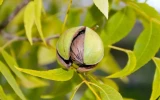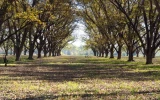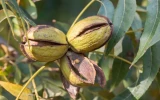How Often Do Pecan Trees Produce? (9 Tips to Maximize Yield)
How often do these majestic pecan trees bear fruit? In this guide, we'll delve into the frequency of pecan tree production and offer nine essential tips to enhance their yield.
Pecan trees are known for their biennial bearing pattern. This means they tend to produce a heavy crop one year (known as the 'on' year) followed by a lighter or sometimes even no crop the next year (the 'off' year). They typically take about 5–10 years to start bearing nuts.
Pecan trees typically grow at a rate of one to three feet per year for non-bearing trees and five to 12 inches for established bearing trees. They can start producing nuts as early as five years old for well-cared-for grafted trees, with an increase in production as they mature. To make the most of your pecan tree's potential, below are a few essential tips and tricks to keep in mind.
Summary
- Keep your tree’s soil consistently moist by providing regular watering.
- Regularly check for pests and implement suitable control measures to protect your tree and its yield.
- Plan the tree's location accordingly, considering factors like lawn chairs, patio furniture, and vehicles.
- Pecan trees do require some seasonal cleanup for leaves, flowers, and sap, so plan for ongoing maintenance.
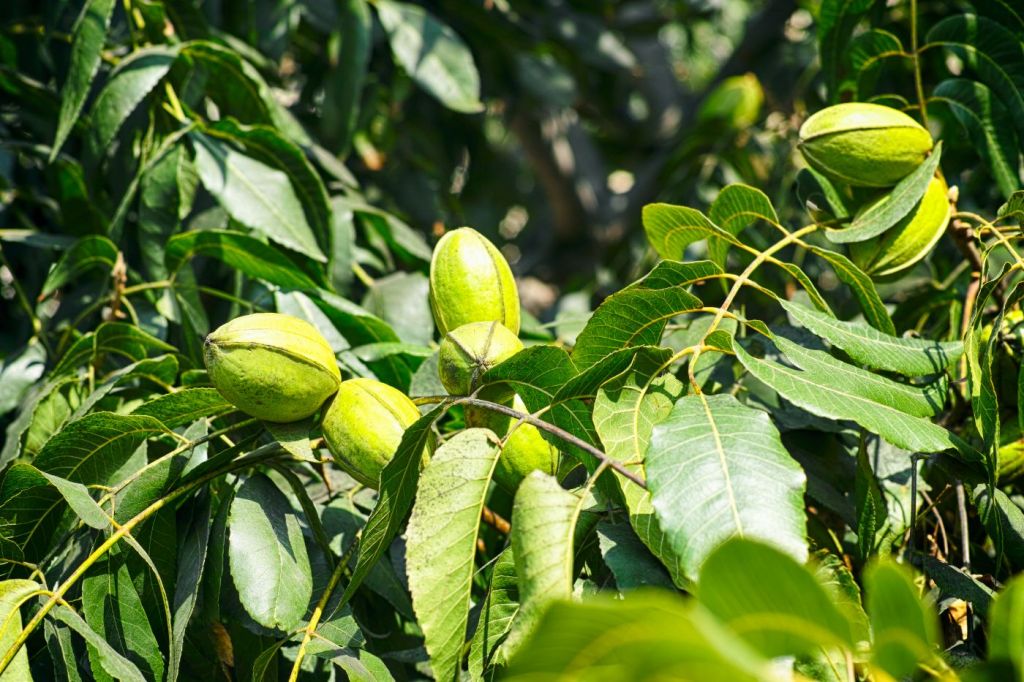
On this page:
Pecan Trees' Biennial Bearing Pattern
Pecan trees typically produce nuts every year, but they often exhibit a biennial bearing pattern. It's their natural production cycle, where they produce a bountiful harvest one year and a smaller yield the next. This off-year phenomenon is not something to worry about and is common in nut-bearing trees like pecans.
It typically takes about 5–10 years for pecan trees to start bearing nuts, and this time frame may vary depending on factors like soil, climate, tree variety, tree age, environmental conditions, and cultural practices.
- Location: Ensure you plant your tree in an area that has full sunlight exposure.
- Soil pH: Make sure to regularly check your soil's pH level to maintain optimal growth conditions, ideally between 6.0 and 6.5.
- Temperature: Although pecan trees can survive low temperatures, it is best to maintain a range of 45–55 degrees Fahrenheit to promote greater nut production.
- Watering: Maintain a consistent watering regime without over-watering the tree. Did you know that overwatering a pecan tree can cause it to produce too many leaves and, ultimately, fewer nuts?
- Tree age: Pecan trees can live for centuries, but they don't start producing nuts until they are about 6-10 years old when grown from seed. Grafted trees may begin producing in as little as 4-6 years. The peak productive age for pecan trees is between 75-225 years.
- Environmental conditions: Climate, soil quality, and water availability significantly affect the production cycle of pecan trees. They thrive in warm climates and require deep, well-drained soils.
- Nutritional status: Adequate nutrition, particularly nitrogen, is crucial for consistent nut production.
Life cycle of pecan trees
On average, pecan trees grow quite quickly once they are established. A pecan tree's life can be separated into three main stages: planting, establishment, and maturity.
During the planting phase, you sow the seeds or transplant young saplings into the ground. It is essential to space the trees properly, considering factors like the number of pecan trees per acre you plan to cultivate. The establishment phase takes several years, with trees reaching maturity around 12 years old. Mature trees can live for 200–300 years and continue producing, especially if grown in the right conditions.
Ideal climatic conditions
These trees thrive in regions with long, warm summers and mild temperatures in the winter. They require at least 200 to 220 frost-free days, with an optimal temperature range of 75–85°F (24–29°C) during the growing season.
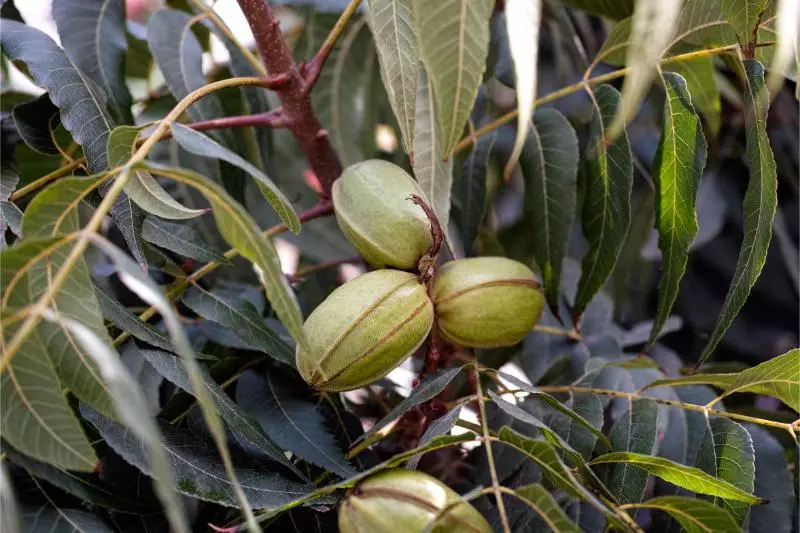
Maximizing Pecan Yield
Tip #1: Proper planting procedures
Ensure that pecan trees are planted in well-drained soil and spaced adequately to allow for sunlight penetration and air circulation. Pecan trees need full sun, with at least 6 to 8 hours of sunlight per day. While these trees can tolerate light shade, they are healthiest and most productive when exposed to full sun. Furthermore, they thrive best in sandy loam with clay soil.
Don't plant your pecan tree near buildings or other large structures that might block sunlight. Keep in mind that planting more than one tree, preferably of different varieties, can also improve pollination and eventually lead to better nut yields.
Tip #2: Amend soil nutrient levels
There is a right way to fertilize a pecan tree, and it's important to follow this method to ensure long-term health and bountiful harvests. Young trees and mature trees require different fertilization schedules, so be sure to adjust your practices accordingly to provide balanced nutrients throughout their growth.
Fertilize in the early spring and summer. Pecan trees need nutrients like nitrogen, phosphorus, and potassium to produce large crops. Have the soil tested to determine specific fertilizer needs.
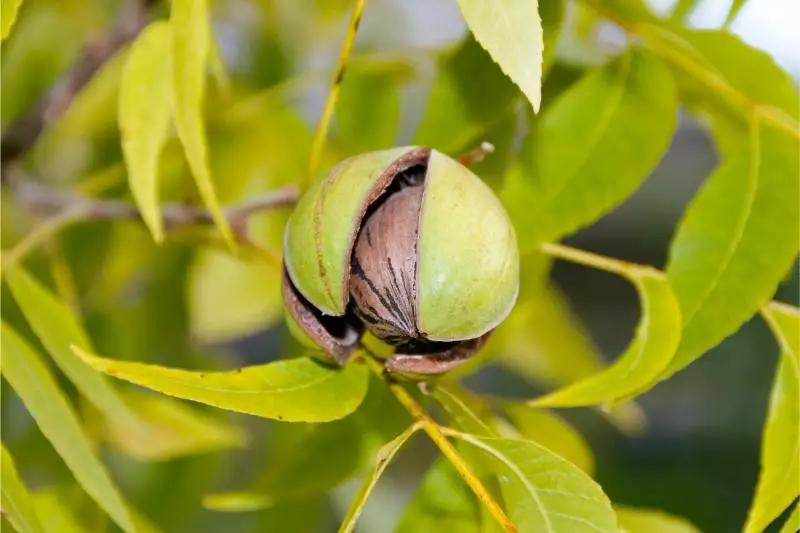
Tip #3: Implement pruning techniques
By removing dead wood and overcrowded branches, you improve light penetration and air circulation in the canopy, which helps prevent diseases and encourages better nut production. Proper pruning also supports the trees' structural integrity, reducing the risk of limb breakage and ensuring a safe and fruitful harvest.
It's best to prune during the tree's dormant season, typically in late winter or early spring. Pruning helps to shape the tree, remove dead or damaged branches, and improve air circulation. Remember to use clean, sharp tools to make precise cuts to avoid any damage to the tree. Pruning stimulates new growth and improves airflow and sunlight penetration to promote fruiting.
Tip #4: Control pests and diseases
Implement an integrated pest management approach that includes monitoring for pests, using natural predators when possible, and applying chemical treatments only when necessary.
Keep an eye out for common pests such as aphids, pecan weevils, and stink bugs. Implement a pest management plan that includes regular monitoring, the use of organic or chemical pesticides when necessary, and promoting beneficial insects within your garden to combat problematic pests.
Tip #5: Water needs of pecan trees
Pecan trees require consistent and deep watering, especially during the growing season. For young trees, it's important to provide at least 1 gallon of water per week. In spring and summer, the trees need around 1–2 inches of rain per week, with supplemental watering if the rainfall is insufficient. Don't forget to water the upper 6 to 8 inches of soil thoroughly, and aim for a weekly soaking rather than frequent light sprinklings.
To help conserve moisture and maintain ideal soil conditions, consider using a mulch made from materials like pine needles, pine bark, or raked leaves. This will keep the soil cool and promote better water retention.
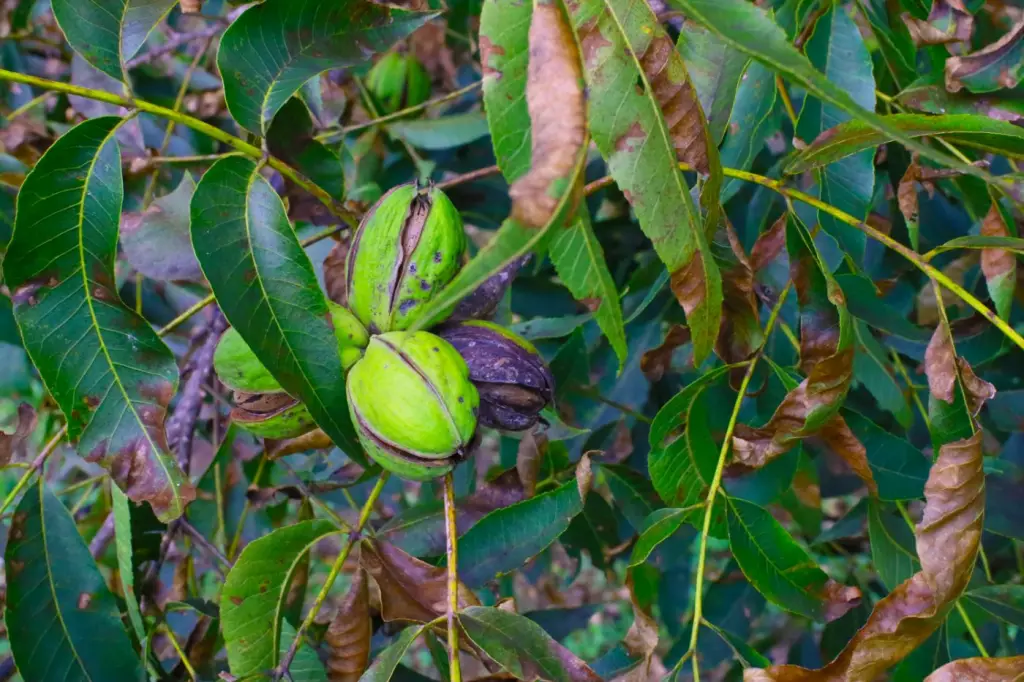
Tip #6: Thinning overcrowded nuts
Thin when nuts are 1/4-1/2 inch in size by removing excess nuts. In years of heavy production, thinning the nuts can reduce the load on the tree and improve the size and quality of the remaining nuts. Thin nuts if trees produce heavily. Overcrowded clusters won't size up well. Aim for 6–8 inches between nuts. Thinning allows trees to concentrate energy into fewer but larger nuts.
Tip #7: Harvesting at the right time
Nuts should be harvested as soon as they ripen to prevent quality degradation and losses from predators. Pecans are ready when shells split open on their own when pressed. Hulls should be papery and dry, not green or moist. Shake branches over a tarp to dislodge ripe nuts in the fall. Continue harvesting weekly as the nuts ripen to get the whole crop.
Tip #8: Post-harvest care
Proper cleaning, drying, and storage of pecan nuts are essential to maintaining their quality and preventing spoilage. Cure nuts in a single layer in a dry, shaded area for 2–4 weeks. This allows shells to dry completely before storage.
Properly cured nuts will last 6–9 months if stored in a cool, dry place. Refrigerate or freeze for longer storage, up to 1–2 years. Monitor stored nuts for pests and dispose of any that are damaged. Shelling and eating the nuts ensure the best flavor and quality.
Tip #9: Replacement of aging trees
Consider grafting desirable varieties if you have older trees. Grafting introduces high-yielding varieties suited to current conditions. Over time, pecan trees may lose their productivity or even succumb to diseases. It's important to replace aging or unproductive trees with new ones.
When planting a new tree, ensure it receives the necessary nutrients for optimal health and productivity by fertilizing at the right time. Following a proper annual maintenance schedule will help you maximize yield and enjoy delicious pecans for years to come.
